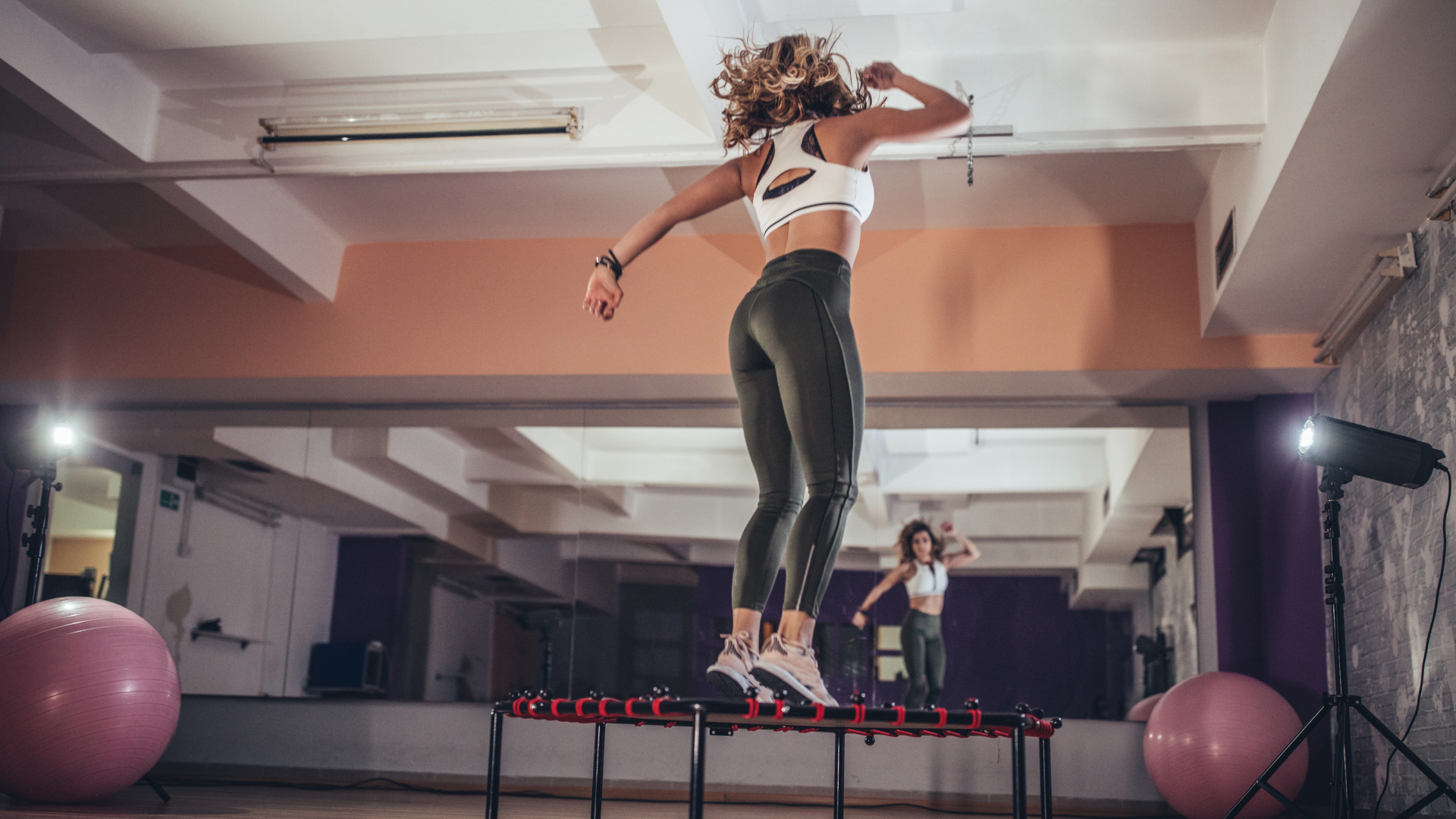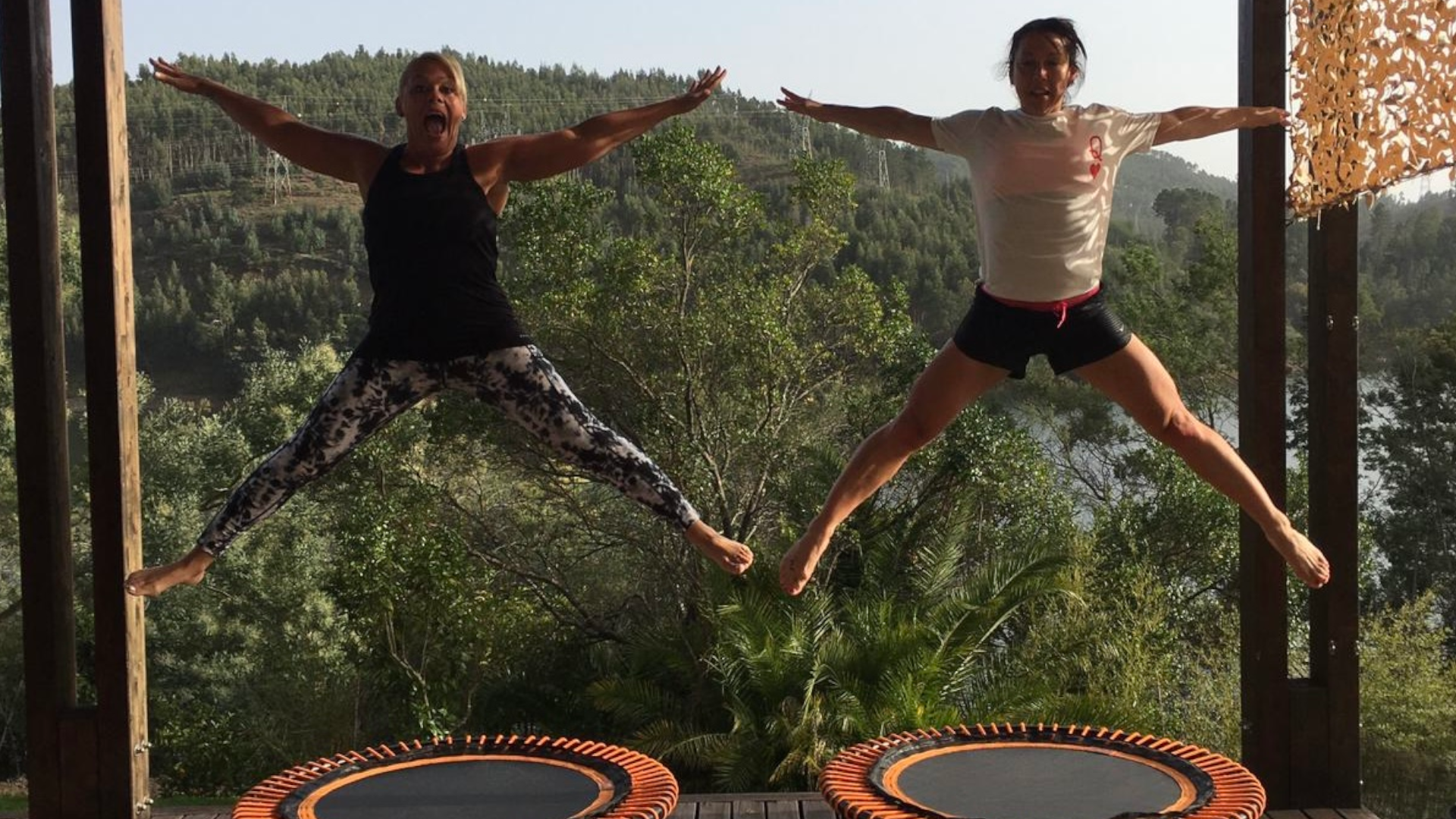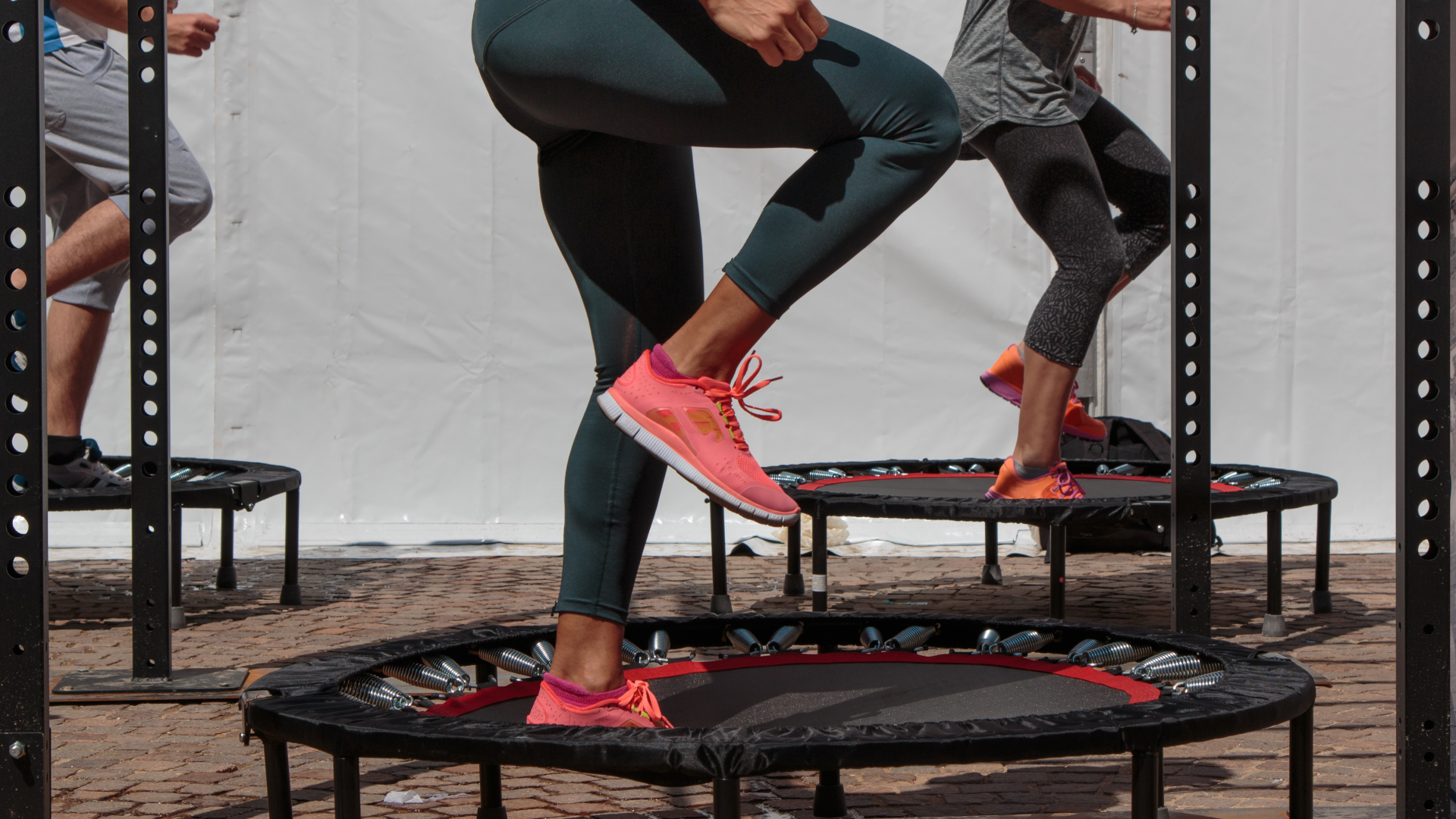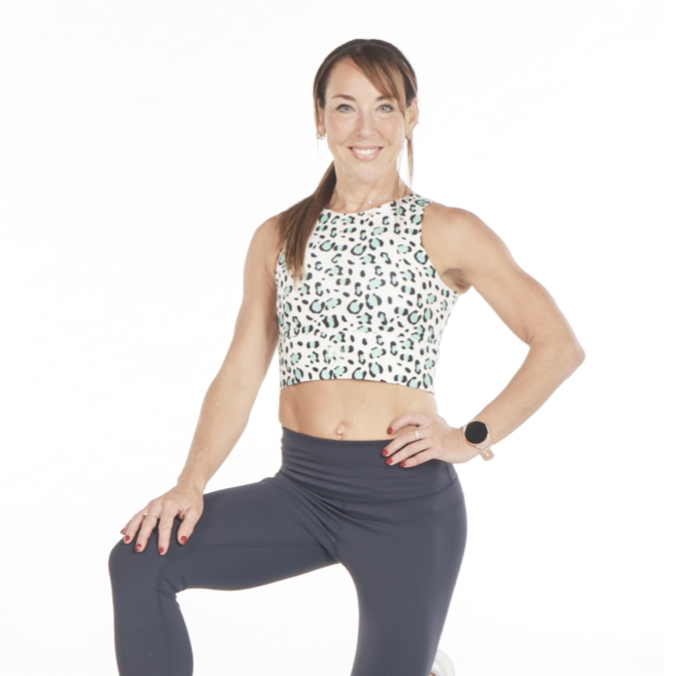I swapped my daily 5K run for a 7-minute rebounder workout – here’s what happened
I got my cardio in – and brought the fun factor back to my workouts


Mini trampolines – or rebounders, as they’re officially known – are having a moment. They always have been in my mind, but until recently, they weren’t exactly known for getting results. I mean, who actually builds fitness by bouncing up and down like a kid?
As it turns out, you don’t have to be a child to enjoy bouncing or benefit from it. I first discovered the joy of rebounding during a retreat with Jason Vale in 2018.
Every morning we’d bounce to classical music at sunrise, then to '80s disco music later in the day. It was a session I thoroughly looked forward to, and because I was on a juice cleanse, we were told that bouncing would help flush out toxins, bacteria, dead cells, and other waste products while burning a ton of calories. I was sold.
I bought a rebounder as soon as I got home - but like many pieces of home gym equipment, it slowly made its way into a corner and gathered a few inches of dust. Eventually, it was lost during a house move.
Lately, I’ve been kicking myself for letting it go. I’ve seen Eva Longoria bouncing away. Cindy Crawford’s also a fan, and even Tony Robbins is on board. It’s not just about aesthetics either (although they’re all in great shape).
Rebounding actually promises a low-impact, full-body workout that delivers cardiovascular benefits.
According to a NASA study, just 10 minutes of rebounding was found to be 68% more effective than 30 minutes of jogging. Researchers found it stimulated muscle activity and movement than running, even though the cardiovascular demand was similar - making it a deceptively powerful workout.
Get all the latest news, reviews, deals and buying guides on gorgeous tech, home and active products from the T3 experts
So, in the name of reviving my inner child and reaping the health benefits, I swapped my usual 5K run for a 7-minute rebounder routine. Here’s what happened.
Day 1: Starting out
I picked up a rebounder from Decathlon; compact, sturdy, and fitted with a balance handle to help me ease in. I based my routine on one I’d seen from Mary Ruth Ghiyam, the founder of Mary Ruth Organics, on Instagram. She’s been doing the same four rebounding moves for 18 years, and it shows. She’s dainty and fit, yet fierce.
Her routine takes just seven minutes and includes four simple moves on rotation: star jumps, jump marching, alternating leg jumps, and wide-legged bounces. Every morning I copied her format and did 20 reps of each for a total of 7 minutes. Simple.
I was surprised by how quickly my heart rate spiked. I could feel it in my legs, glutes, feet, and core. I also noticed something else; my mood was lifted for the entire day. I popped on my favourite tunes and bounced away. It’s a genuinely enjoyable way to train.
Day 2: Injury-friendly intensity

I’d recently tweaked my calf, so the timing was ideal. Every day, I completed my 7-minute routine with no pain in my lower leg. Rebounding spreads impact across the whole body, reducing strain on joints. The trampoline absorbs up to 85% of landing force, making it a unique blend of low-impact and high-intensity.
Day 3: Still a cardio workout
I expected to miss the rhythm and pace of running, but I didn’t. A study by the American Council on Exercise (ACE) found that participants reached 79% of their maximum heart rate and 59% of VO2 max while rebounding.
According to my fitness tracker, my heart rate climbed into Zone 2 quickly and even touched Zone 3 by the end of the session. I was a sweaty mess, but didn’t realise it until I sat down and reflected on the workout (and looked in the mirror). I was hooked.
Day 4: Internal gains
A recent wellness scan at The BodyHoliday in St Lucia revealed my calcium levels were low, not ideal at 42, with menopause on the horizon. Rebounding supports bone health by placing gentle stress on the bones, encouraging density and strength. It’s also a powerful tool for lymphatic drainage, helping flush out waste, viruses, and toxins while giving the immune system a boost.
My legs and glutes definitely felt the effort, but in a completely different way. No pain or impact, just a satisfying fatigue and a buzz as the blood flow surged through my body with every bounce.
Day 5: Technique matters

The key is to bounce down into the trampoline bed, not up – using your whole foot to push into the surface. Stay low, core engaged, knees soft. Done properly, rebounding challenges balance, coordination, and proprioception (your body’s sense of spatial awareness).
“Rebounding has some fascinating benefits, especially in how it works against gravity,” says MaryRuth, “It not only has a positive impact on your cells but also helps build muscle strength through acceleration and deceleration.”
It was hard not to launch upwards at first, but the beauty of the technique is you don’t need to go high. By constantly working against gravity, your bodyweight can feel up to three times heavier at the bottom of the bounce due to increased G-forces, sending the workout intensity through the roof. Bonus: bouncing down instead of up meant I could work out in my living room without worrying about hitting the ceiling.
Day 6: Mental reset
Here’s something I didn’t expect: I felt calmer after bouncing than I ever do after running. The rhythmic, repetitive motion has a soothing effect on the nervous system, pulling you out of fight-or-flight mode and into a more relaxed state.
Add in the endorphin boost and a great playlist, and you’ve got a workout that’s as good for your mind as it is for your body. In fact, I challenge you to find another workout that makes you smile, laugh, and feel as light-hearted as rebounding does.
Day 7: Verdict
I won’t be ditching my runs completely, I’ve got the Royal Parks Half Marathon to train for, but I’ll definitely keep rebounding in the mix. Seven minutes of bouncing feels more than doable, especially as the rebounder folds and slides neatly under my sofa.
The science backs it up too. A 2016 study found mini trampoline training to be twice as effective as running for improving aerobic fitness, 50% better at burning fat, and more efficient at increasing VO₂ max.
More importantly, it’s helped me feel younger, stronger, more mobile, and less stressed. My kids love bouncing on it too, laughing, moving, and getting their heart rates up without even realising it’s exercise. That alone makes it a worthy investment.

Lucy Miller is a journalist, Level 3 Personal Trainer, Nutritional Advisor and Children’s Fitness Specialist. She holds fitness qualifications from NASM Training and Premier Training International and has been a fitness journalist and fitness (and cover) model for over 20 years. Since going freelance in 2014, Lucy left Men’s Fitness Magazine to write for an abundance of top consumer titles such as Women’s Health, Women’s Fitness, Waitrose, The Times, The Guardian and Runners World.
She’s also extremely passionate when it comes to educating others about health and physical activity and loves inspiring and working with children and adults to help make fitness fun, sustainable and accessible. In her spare time, Lucy is ever the sportswoman. Once a national gymnast, having won three national titles, she has also run a handful of marathons around the world and loves to test her physical and mental side with daily running and gym sessions, not to mention ballet, bootcamp, boxing and TRX.
You must confirm your public display name before commenting
Please logout and then login again, you will then be prompted to enter your display name.